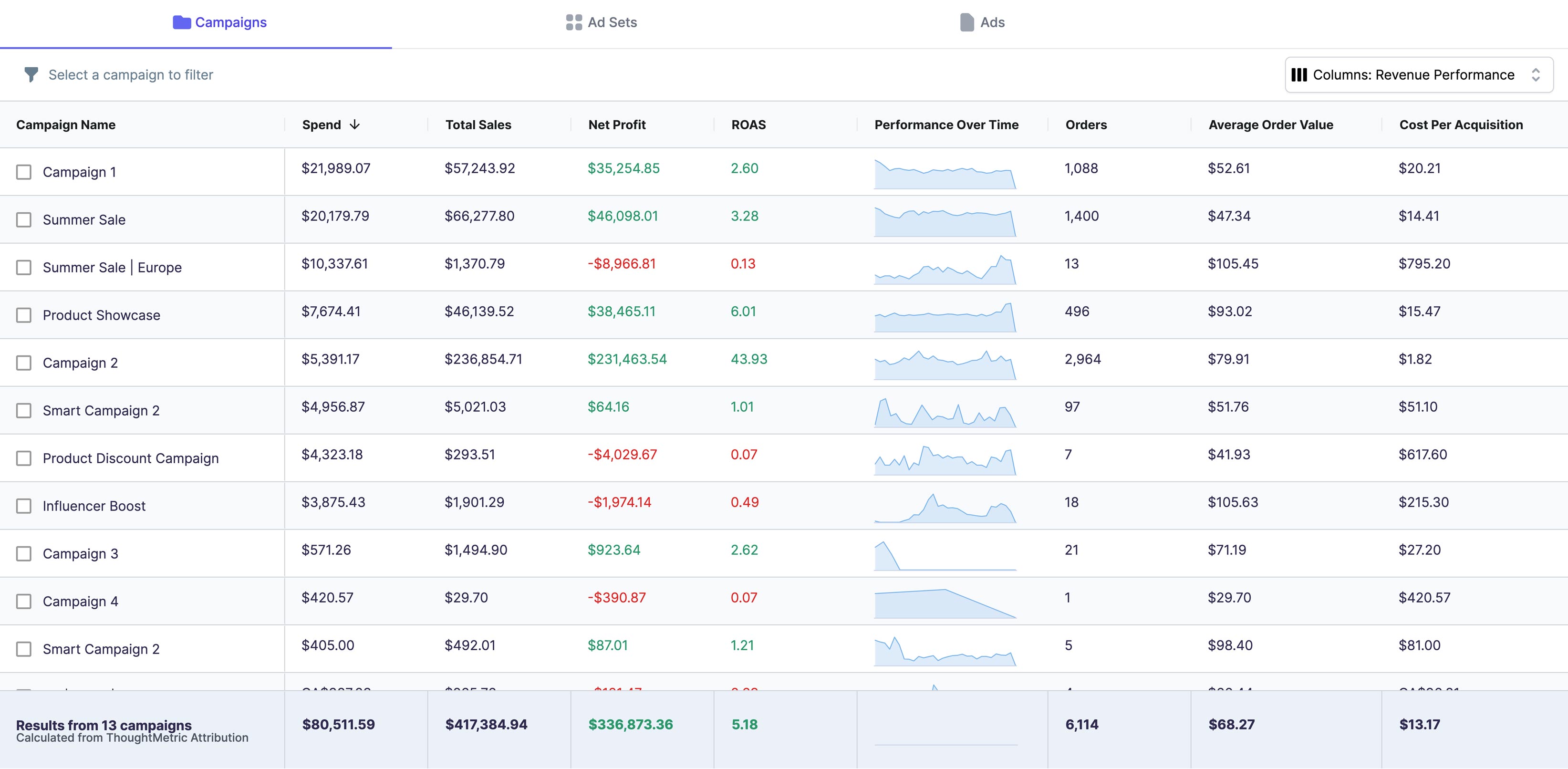With ThoughtMetric’s Product Attribution Dashboard, you can answer that question in seconds.
Step-by-Step: See Which Products Drive New vs. Returning Customers
In the left-hand menu, click Product, then select Product Attribution.
2) Check the Sales Breakdown
You’ll see two key columns:
- Sales – New Customers
- Sales – Returning Customers
- These show you exactly how much revenue each product is generating from each group.
-
Interpret the Data
- If a product has more new customer revenue, it’s likely great for acquisition.
- If most sales come from returning customers, it could be ideal for retention or upsell campaigns.
-
Sort to Spot Patterns
Click on the column headers to quickly sort your products by new or returning customer sales. This makes it easy to see trends and opportunities without digging through spreadsheets.
Real-World Use Case
In a few clicks, the Product Attribution Dashboard shows you exactly which products fit those roles, so you can build smarter campaigns backed by data, not guesses.
Why It Matters
- Improve ROAS by matching offers to intent
- Build more effective welcome flows and retention strategies
- Double down on what’s working (and avoid wasting spend)
Ready to See for Yourself?
FAQ: Product Attribution in ThoughtMetric
A: Go to the Product section in the left-hand menu and click on Product Attribution. Look at the columns labeled "Sales - New Customers" and "Sales - Returning Customers" to see where each product’s revenue is coming from.
A: Yes. Just click on the column headers to sort products by revenue from new or returning customers. This helps you quickly identify acquisition and retention trends.
A: This insight helps you plan better campaigns. Products that attract new customers are great for ads. Products that drive repeat purchases work well for email and retention strategies.
A: It’s a tool inside ThoughtMetric that shows product performance by channel and customer type. It helps you see which products bring in new customers, which ones drive repeat sales, and how each one contributes to revenue.
A: No setup is required beyond connecting your store and ad platforms. Once that’s done, the dashboard is ready to use with no extra configuration.





.png)